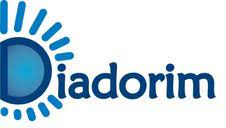Is the reuse of abandoned nest material a characteristic of the genus Parachartergus Ihering, 1904 (Vespidae: Polistinae)?
DOI:
https://doi.org/10.12741/2675-9276.v5.e079Palavras-chave:
economy, envelope, nesting, waspResumo
The social wasp species of the genus Parachartergus Ihering, 1904 (Vespidae: Polistinae) use plant fibers and saliva to build their nests, although two species are known to reuse material from abandoned nests belonging to other wasps. This paper aims to report the species Parachartegus pseudapicalis Willink, 1959, which has reused material from an abandoned social wasp nest. The record occurred at random, in November 2023, in the Atlantic Forest and Cerrado transition area, in the municipality of Luminárias, southern Minas Gerais, Brazil. The reported behavior is similar to that observed in Parachartegus fraternus (Gribodo, 1892) and Parachartegus colobopterus (Lichtenstein, 1796). This reuse may be frequent in Parachartergus, but further studies are suggested in order to better elucidate this behavior and its evolutionary significance.
Downloads
Referências
Andena, SR & Carpenter, JM (2014). Checklist das espécies de Polistinae (Hymenoptera, Vespidae) do semiárido brasileiro, pp. 169-180. In: Bravo, F & Calor, A (Eds.). Artrópodes do semiárido: Biodiversidade e Conservação. Printmidia.
Barbosa, BC; Maciel, TT & Prezoto, F (2021). Nesting habits of neotropical social wasps, pp. 85-90). In: Prezoto, F; Nascimento, FS; Barbosa, BC & Somavilla, A. (Eds.). Neotropical social wasps. Springer. https://doi.org/10.1007/978-3-030-53510-0_5
Del-Claro, K. (Ed.) (2004). Comportamento animal. Uma introdução à ecologia comportamental. Livraria Conceito.
Ferreira, EDF; de Oliveira, TMD; Teofilo-Guedes, GS & Souza, MM (2022). Nidificação de Parachartergus pseudapicalis Willink em substrato vegetal (Hymenoptera, Polistinae). Entomology Beginners, 3: 1-3. https://doi.org/10.12741/2675-9276.v3.e030
Francisco, GS; Souza, MM; Clemente, MA & Brunismann, AG (2018). Substrato vegetal utilizado para nidificação de vespas sociais (Hymenoptera, Vespidae) em Floresta Decidual. Revista Agrogeoambiental, 3: 35-45. https://doi.org.br/10.18406/2316-1817v10n320181162
Jeanne, RL (1986). The organization of work in Polybia occidentalis: the costs and benefits of specialization in a social wasp. Behavioral Ecology and Sociobiology, 19: 333-341. https://doi.org/10.1007/BF00295706
Mateus, S. (2011). Observations on forced colony emigration in Parachartergus fraternus (Hymenoptera: Vespidae: Epiponini): new nest site marked with sprayed venom. Psyche. A Journal of Entomology, 2011: 1-8. https://doi.org/10.1155/2011/157149
Richards, OW & Richards, MJ (Eds.) (1951). Observations on the social wasps of South America (Hymenoptera, Vespidae), transactions of the royal entomological. Society of London.
Richards, OW (Ed.) (1978). The social Wasps of the Americas, Excluding the Vespinae. British Museum, Natural History.
Sarmiento, MCE (1999). Nest material reuse by Parachartergus R. von Ihering (Hymenoptera: Vespidae). Journal of the New York Entomological Society, 107: 86-88.
Somavilla, A; Oliveira, ML & Silveira, OT (2012). Guia de identificação dos ninhos de vespas sociais (Hymenoptera, Vespidae, Polistinae) na Reserva Ducke, Manaus, Amazonas, Brasil. Revista Brasileira de Entomologia, 56: 405-414. https://doi.org/10.1590/S0085-56262012000400003
Somavilla, A; Barbosa, BC; Souza, MM & Prezoto, F. (2021). List of Species of Social Wasps from Brazil. pp. 293-316. In: Prezoto, F; Nascimento, FS; Barbosa, BC & Somavilla, A. (Eds.), Neotropical Social Wasps. Springer. https://doi.org/10.1007/978-3-030-53510-0_16
Souza, MM; Clemente, MA & Teofilo-Guedes, GS (2020a). Nest camouflage records on five social wasp species (Vespidae, Polistinae) from southeastern Brazil. EntomoBrasilis, 13: 01-04. https://doi.org/10.12741/ebrasilis.v13.e929
Souza, MM; Teofilo-Guedes, GS; Milani, LR; De Souza, ASB & Gomes, PP (2020b). Social Wasps (Vespidae: Polistinae) from the Brazilian Atlantic Forest. Sociobiology, 67: 1–12. https://doi.org/10.13102/sociobiology.v67i1.4597
Souza, MM; Teofilo-Guedes, GS; Bueno, ET; Milani, LR & De Souza, ASB (2020c). Social wasps (Hymenoptera, Polistinae) from the Brazilian savanna. Sociobiology, 67: 129–138. https://doi.org/10.13102/sociobiology.v67i2.4958
Rubim, GTR; Araújo, LCS; Jacques, GC & Souza MM (2023). Reuse of abandoned social wasp nest material by Parachartergus fraternus (Gribodo, 1892) (Vespidae: Polistinae) in cerrado. Acta Biológica Catarinense,10: 82-85. https://doi.org/10.21726/abc.v10i4.2077
Wenze,l JW (1991). Evolution of nest architecture, pp.480-519. In: Ross, KG & Matthews, RW (Eds.). The social biology of wasps. Cornell University.
Wenzel, JW (1998). A generic key to the nests of hornets, yellowjackets, and paper wasps worldwide (Vespidade, Vespinae,Polistinae). American Museum Novitates, 3224: 1-39.
Downloads
Publicado
Como Citar
Edição
Seção
Licença
Copyright (c) 2024 Autor(es)

Este trabalho está licenciado sob uma licença Creative Commons Attribution 4.0 International License.
Entomology Beginners é publicada sob o modelo de Acesso Aberto (Full Open Access) e, portanto, são gratuitas para qualquer pessoa ler, baixar, copiar e divulgar, nos termos da Creative Commons License - CC-By.


















